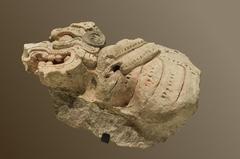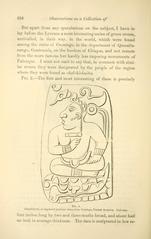Bonampak, Chiapas, Mexico: Complete Guide to Visiting Hours, Tickets, and Historical Sites
Date: 14/06/2025
Introduction: Bonampak’s Historical and Cultural Importance
Deep in the heart of the Lacandon Jungle in Chiapas, Mexico, Bonampak stands as a testament to the artistic and political sophistication of the ancient Maya civilization. Most famous for its vibrant, exceptionally well-preserved murals, Bonampak provides a unique window into the lives, rituals, and conflicts of the Maya during the late Classic Period (circa 790 CE). These murals challenge the perception of the Maya as a solely peaceful people, vividly depicting scenes of warfare, royal ceremonies, and ritual bloodletting. As a vassal city within the Yaxchilan polity, Bonampak played a crucial role in the region’s shifting alliances and power struggles (Britannica; Loco Gringo).
Discovered in 1946 by photographer Giles Healey, guided by the local Lacandon Maya, Bonampak’s murals have sparked extensive research and preservation efforts from institutions such as INAH and Yale University (Wikivoyage; The Brain Chamber). Visitors can now explore not just the murals, but also the broader context of Maya history, the surrounding jungle, and neighboring archaeological sites in Chiapas.
This guide provides a detailed overview of Bonampak’s history, practical visitor information, transportation options, cultural sensitivity guidelines, and recommendations for making your trip both respectful and rewarding.
Table of Contents
- Introduction: Bonampak’s Historical and Cultural Importance
- The Maya in Chiapas: Historical Overview
- Bonampak’s Role in Regional Power
- The Murals: Artistic and Archaeological Legacy
- Visiting Bonampak: Hours, Tickets, and Regulations
- Getting There: Transportation and Logistics
- Facilities, Accessibility, and Site Navigation
- Practical Tips for a Successful Visit
- Responsible Tourism and Community Engagement
- Nearby Attractions and Complementary Experiences
- Frequently Asked Questions (FAQ)
- Conclusion and Recommendations
- Sources
The Maya in Chiapas: Historical Overview
Chiapas, a key region in the ancient Maya world, hosted several prominent city-states, including Palenque, Yaxchilan, Toniná, and Bonampak. From the early centuries CE through the Classic Period (c. 250–900 CE), these cities formed networks of trade, alliances, and conflict along the Usumacinta River (Mexico Historico; Loco Gringo).
Bonampak, meaning “painted walls,” stands out for its murals, which provide rare and detailed insight into Maya politics, warfare, and ceremony. The site’s history is intertwined with that of Yaxchilan, under whose influence Bonampak flourished. The murals, painted during the reign of Chan Muan II, immortalize key moments in the city’s history (Sailing Stone Travel; Wikivoyage).
Bonampak’s Role in Regional Power
During the Classic Period, Maya city-states like Bonampak were engaged in shifting alliances and frequent warfare. As a vassal of Yaxchilan, Bonampak’s rulers legitimized their authority through art, ritual, and architecture. The murals showcase these dynamics, depicting rulers, their courts, and significant military events (Loco Gringo).
The Murals: Artistic and Archaeological Legacy
Discovery and Documentation
The Bonampak murals were discovered in 1946 and quickly became world-renowned due to their vivid colors and detailed narrative scenes. Documented by major research institutions, they remain the most complete examples of Maya wall painting (The Brain Chamber).
The Temple of the Murals
Housed in Structure 1, the murals cover three rooms:
- Room 1: Depicts royal succession ceremonies.
- Room 2: Illustrates warfare and its aftermath, including captives and rituals.
- Room 3: Shows victory celebrations, musicians, and bloodletting ceremonies.
The murals use mineral-based pigments in blue, red, green, and yellow, and demonstrate advanced techniques in perspective and movement. To protect them, access is limited to small groups and flash photography is prohibited (Wikivoyage).
Visiting Bonampak: Hours, Tickets, and Regulations
- Visiting Hours: Open daily from 8:00 AM to 5:00 PM. Last entry is typically at 4:00 PM (RutaTrenMaya.com).
- Tickets: Entry fee is approximately 75–95 MXN pesos (about $4–$5.50 USD). Discounts are available for Mexican nationals, students, and seniors. Tickets are purchased at the Lacanjá Chansayab entrance or via guided tours (MexicoArcheology.com).
- Site Rules: To protect the art, only four visitors may enter each mural room at a time. Flash photography is strictly prohibited.
Getting There: Transportation and Logistics
Bonampak’s remote location requires planning:
- From Palenque: About 148 km by road. Options include:
- Guided tours (highly recommended), often combining Bonampak with Yaxchilan (OffPathTravels.com).
- Public transport: Bus to Frontera Corozal, then colectivo or taxi.
- Private vehicle: Last 8 km accessible only via community transport.
- Mayan Train: The new railway includes a stop at Palenque; local transfers are still required (RutaTrenMaya.com).
Facilities, Accessibility, and Site Navigation
- Facilities: Restrooms and a small refreshment area at the entrance. Bring your own water and snacks (MexicoArcheology.com).
- Accessibility: Terrain is uneven and can be slippery; not recommended for those with mobility challenges (AncientMayanRuins.com).
- Site Layout: Main attractions include the Gran Plaza and Acropolis, with jungle trails connecting structures (RutaTrenMaya.com).
Practical Tips for a Successful Visit
- What to Bring: Water, snacks, insect repellent, sunscreen, hat, sunglasses, and a camera (no flash in mural rooms) (AncientMayanRuins.com).
- Clothing: Lightweight, long-sleeved clothing for sun and insect protection.
- Best Season: Dry season (November–April) for comfort and fewer insects (MexicoHistorico.com).
- Time Management: Allow at least half a day, factoring in travel.
- Guides: Local Lacandon Maya guides add cultural insight and help support the community (Drive Mexico Magazine).
Responsible Tourism and Community Engagement
- Cultural Sensitivity: Greet locals politely, dress modestly, and always ask before taking photos of people (Mexican Travel Treks).
- Community Support: Hire local guides, buy handicrafts, and tip fairly (Tourist Secrets).
- Environmental Care: Stay on marked trails, do not litter, and avoid disturbing flora and fauna (Drive Mexico Magazine).
Nearby Attractions and Complementary Experiences
- Yaxchilan: Accessible by boat on the Usumacinta River, known for stelae and jungle setting (Every Steph).
- Palenque: UNESCO site with impressive architecture (Off Path Travels).
- Agua Azul and Misol-Ha: Stunning waterfalls ideal for relaxation (Rutopia).
- San Cristóbal de las Casas: Offers cultural immersion and indigenous markets.
Frequently Asked Questions (FAQ)
Q: What are Bonampak’s visiting hours?
A: 8:00 AM to 5:00 PM daily, last entry at 4:00 PM.
Q: How do I purchase tickets?
A: At the Lacanjá Chansayab entrance or through local tour operators.
Q: Is Bonampak accessible for people with mobility issues?
A: The site has rough, uneven terrain and is challenging for those with limited mobility.
Q: Are guided tours available?
A: Yes, local Lacandon Maya guides are available and highly recommended.
Q: What should I bring?
A: Water, snacks, repellent, sun protection, comfortable clothing and shoes, and a camera (no flash in mural rooms).
Conclusion and Recommendations
Bonampak is an unparalleled destination for those seeking to experience the grandeur and complexity of Maya civilization. Its murals offer a vivid narrative of royal life, warfare, and ritual, while the surrounding Lacandon Jungle and local communities provide a living context for ancient traditions. By planning ahead, respecting guidelines, and engaging with local guides and artisans, visitors help preserve Bonampak’s legacy for future generations.
For the most up-to-date visitor information and expert guides, consider downloading the Audiala app. Explore related articles on Chiapas travel and Maya archaeology, and follow our social media for inspiration and updates.
Sources
- Bonampak (Britannica)
- Bonampak Ruins Chiapas (Loco Gringo)
- Bonampak (Wikivoyage)
- Bonampak (The Brain Chamber)
- Exploring the Sacred Sites of the Maya in Mexico’s Chiapas Region (Mexico Historico)
- Bonampak (MexicoArcheology.com)
- Bonampak Archaeological Site (RutaTrenMaya.com)
- Bonampak Chiapas (Drive Mexico Magazine)
- Yaxchilan and Bonampak (OffPathTravels.com)
- How to Show Cultural Sensitivity in Mexico (Mexican Travel Treks)
- Top 10 Cultural Faux Pas to Avoid When Visiting Mexico (Tourist Secrets)
- Bonampak (AncientMayanRuins.com)
- Exploring the Maya Ruins of Bonampak—The Painted City of Chiapas (MexicoHistorico.com)
- Chiapas (Rutopia)
- Things to Do in Chiapas, Mexico (Every Steph)

